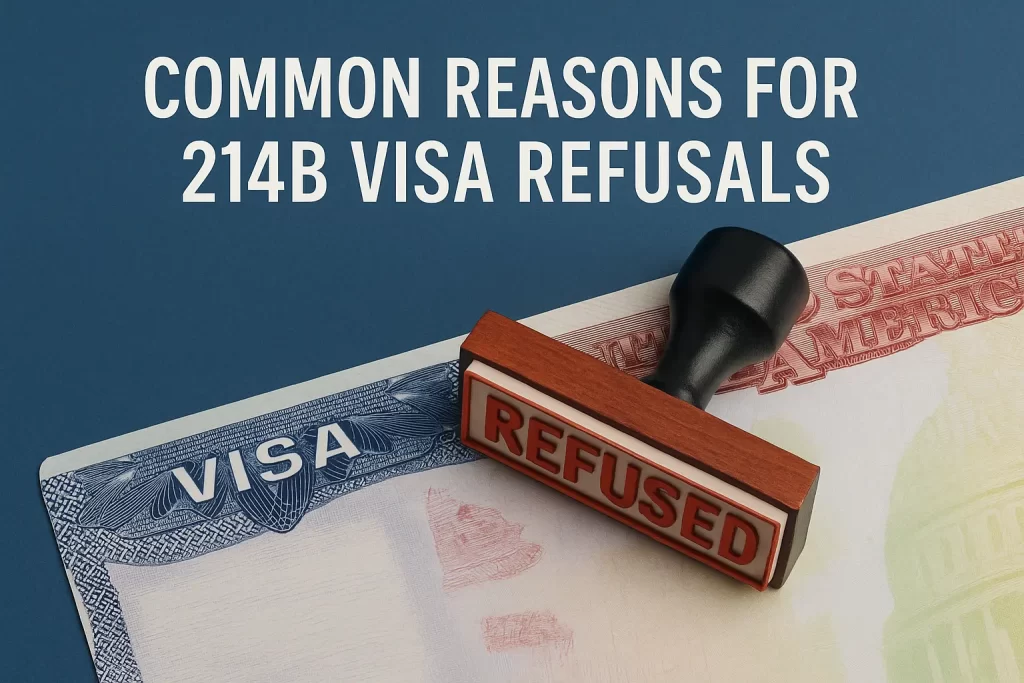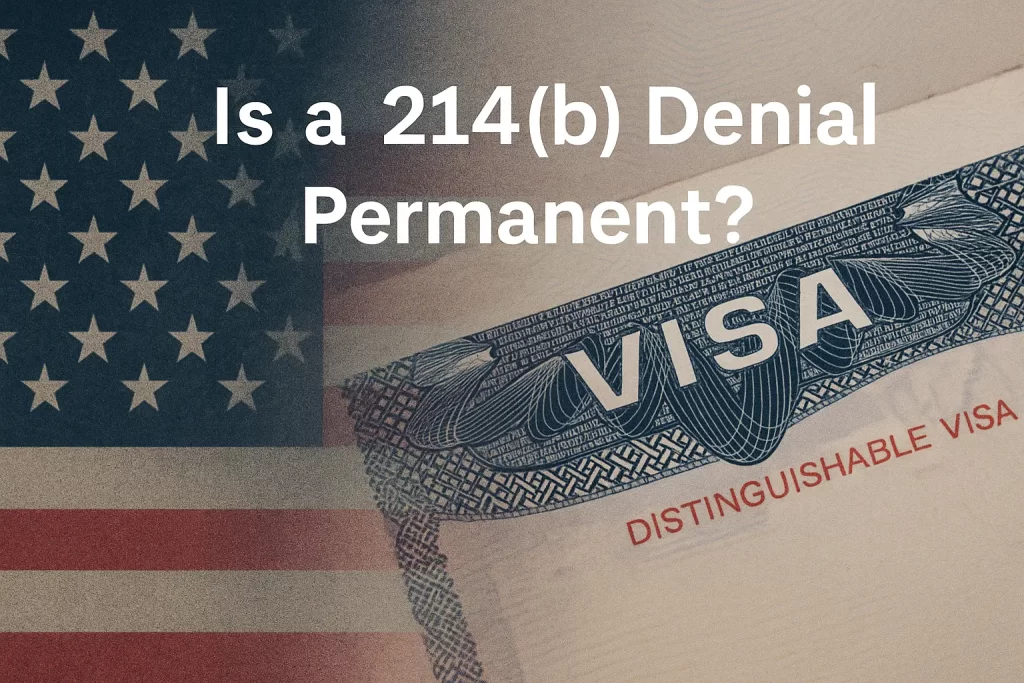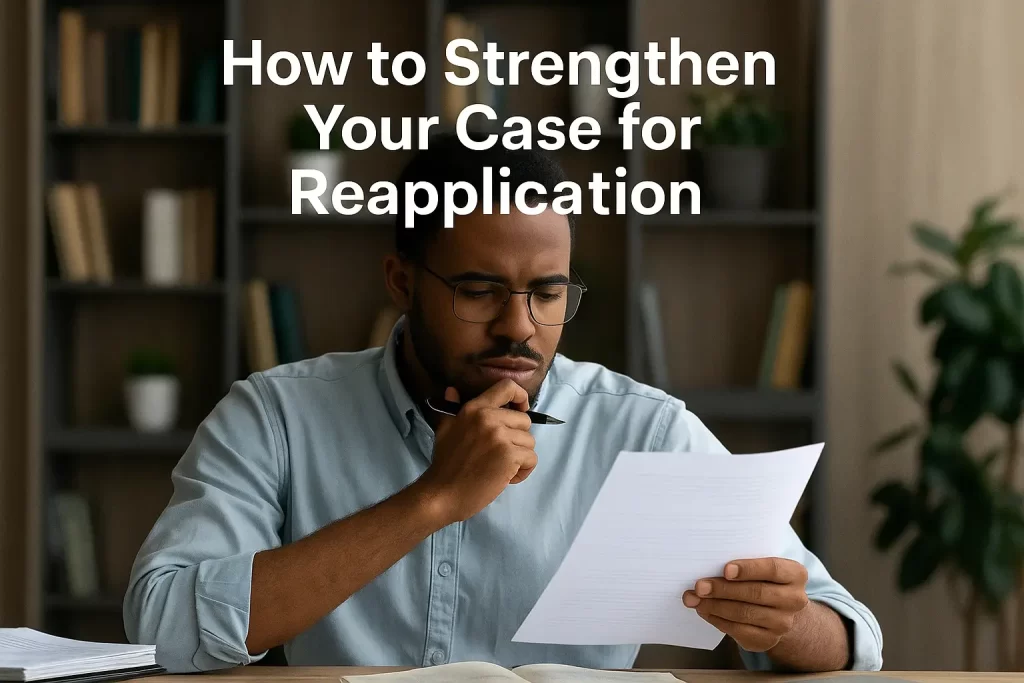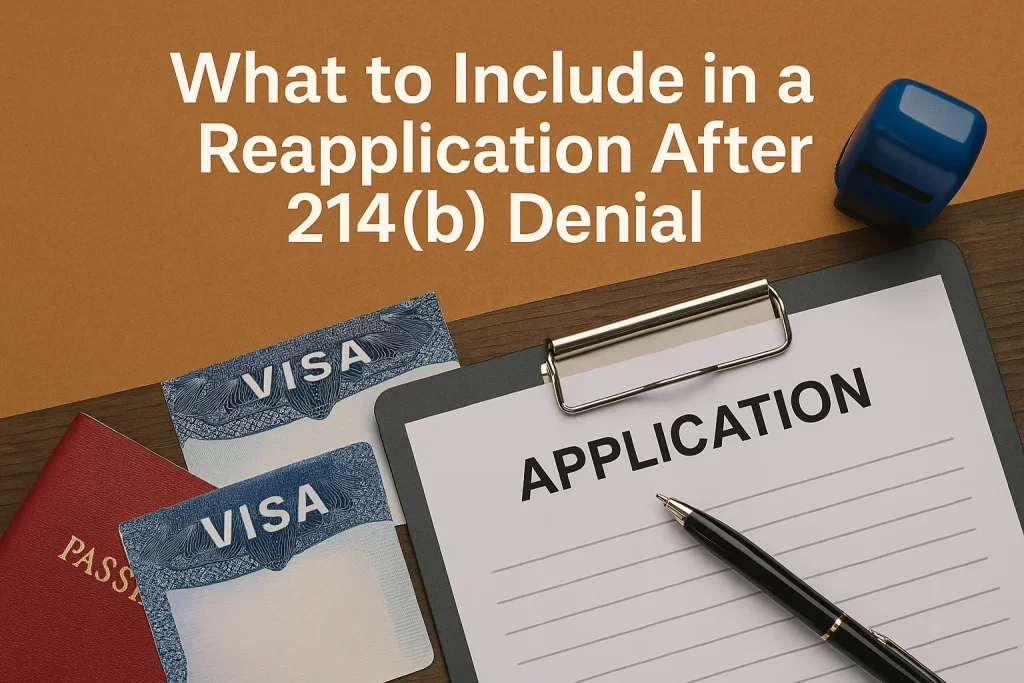So let’s get into it—what actually is a 214b denial? If you’ve ever seen that code stamped on your visa refusal slip, it refers to Section 214(b) of the U.S. Immigration and Nationality Act. It’s not just some random bureaucratic clause—it’s the backbone of U.S. nonimmigrant visa law. And yeah, it’s kind of brutal.
Basically, under this law, every applicant for a nonimmigrant visa—like a tourist (B2), student (F1), or business visitor (B1)—is presumed to be an intending immigrant. That means the visa officer is trained to believe that you want to stay in the U.S. permanently unless you prove otherwise. Yep, the burden of proof is all on you. 🎯
Most people don’t realize this, but the default assumption is that you’re lying about wanting to come back home. Sounds harsh, but that’s the legal framework. The consular officer has to be convinced that you’re only going to the U.S. for your stated purpose—and that you’ll definitely come back.
This is why your interview matters so much. It’s not just about having all your documents in order. It’s about showing—clearly and convincingly—that your ties to your home country are stronger than any reason you’d have to stay in the U.S.
Some of the most commonly affected visas include:
- B1/B2 Tourist or Business Visas
- F1 Student Visas
- J1 Exchange Visitor Visas
- H3 Trainee Visas
And here’s the kicker: officers aren’t required to give you a detailed explanation when they refuse you under 214b. You usually just get a vague form letter and a bruised ego.
But knowing what this section really means is your first step toward overcoming it. Once you understand the law behind it, you can start building a stronger case for your next application. We’ll get into that soon.
🚫 Common Reasons for 214b Visa Refusals

Alright, so now that you know what a 214b denial actually is, let’s talk about the why. Because trust me, it’s not always about you doing something “wrong”—it’s often just about not doing enough to check the invisible boxes in the visa officer’s head.
Here are the most common reasons people get hit with the dreaded 214b stamp:
🏠 Weak Ties to Your Home Country
This one’s huge. If the officer isn’t convinced you’ll come back, that’s it—you’re out. They’re looking for proof of strong family, social, or economic connections to your country. No full-time job? No spouse or kids? No property? That can all count against you, even if your intentions are 100% legit.
🤷 Inconsistent or Vague Interview Answers
You’ve got five minutes—maybe less—to make your case. If you stumble on questions like “What do you plan to do after your trip?” or “Why did you choose this university?”, it might make the officer doubt your whole story. Consistency is key. They want to see a clear, thought-out plan that makes sense.
💸 Lack of Financial Resources
Whether it’s a trip to Disney World or a four-year degree, the U.S. government wants to be sure they won’t have to support you. If your bank statements are weak, your sponsor situation is unclear, or you can’t explain where your funds are coming from, that’s a red flag. Show them the money—literally.
🕵️ Suspected Immigrant Intent
Even if you say you’ll return home, if your background suggests otherwise—like prior overstays, canceled green card petitions, or even just vague answers—they may assume you secretly plan to stay. The law gives them broad discretion. It’s not fair, but it’s real.
📄 Poor Documentation or Preparation
Some people think just showing up with a thick folder of papers will guarantee a yes. Nope. If you can’t explain those documents confidently, or if you’re missing key things (like proof of employment or ties), it can make you look unprepared—or worse, suspicious.
Honestly, a 214b denial often feels like guessing what number the officer’s thinking of. 🎲 But understanding these red flags gives you a real advantage next time. Next up, let’s talk about whether that denial is permanent and what you can actually do about it.
❌➡️✅ Is a 214b Denial Permanent?

Here’s some good news (finally!): a 214b denial is not permanent. You’re not banned, blacklisted, or doomed to never visit the U.S. again. It’s not like getting fired from a job where your name stays in the HR files forever. It’s more like failing a test—you can always retake it.
A 214b refusal simply means the consular officer wasn’t convinced at that moment that you met the requirements for the visa. That’s it. There’s no mandatory waiting period, and technically, you can reapply the very next day. But should you? Probably not—unless something significant has changed.
So what does “significant” mean?
U.S. consulates look for “new and compelling circumstances.” That means you need to show something different than what you brought to the table the first time. It could be:
- A new job with stronger income
- Buying property or starting a business in your home country
- Enrolling in a local university or getting accepted to a more recognized one
- Getting married or having a child
- Correcting a mistake in your previous application
Basically, if nothing’s changed and you reapply hoping for a different officer to feel nicer that day… it’s a long shot. 😬
Also important: a 214b doesn’t mean you can’t ever get any U.S. visa. You can still qualify for future visas—sometimes even different types (like an immigrant visa through a family petition). It all depends on the strength of your new case.
One more thing: don’t try to argue or appeal a 214b decision. There’s no formal appeal process. The consular officer’s decision is final, and they’re not required to give detailed reasons. Yeah, that part stings. But your best move is always forward—not backward.
💼📈 How to Strengthen Your Case for Reapplication

Okay, so now you know a 214b denial isn’t forever—but if you’re gonna reapply, you’ve gotta come back stronger. This isn’t about “trying again and hoping for the best.” This is about leveling up your game and giving the visa officer zero doubt that you’re coming back home.
Here’s what actually works:
🔗 Build (and Show!) Stronger Ties to Your Home Country
This is the most important thing. You need to convince the officer that your life is rooted where you are. That means:
- Proof of full-time employment or business ownership
- Marriage certificate, family responsibilities, or dependents
- Property deeds, rental agreements, or investment statements
- Enrollment letters from school, or proof of ongoing education
Don’t just say, “I’ll return”—prove it with documents and logic.
💰 Improve Your Financial Documentation
Show that you have enough money for your trip, your studies, or whatever you’re going for. This means:
- Bank statements with healthy balances
- Tax returns showing steady income
- A clear explanation of your funding source (especially if it’s a sponsor)
- No shady last-minute deposits! That looks sus. 🚩
🗣️ Prep for the Interview Like a Job Interview
I cannot stress this enough: practice your answers out loud. Know your purpose, your itinerary, and your life plan. Don’t sound rehearsed, but don’t wing it either. Consider doing a mock visa interview with someone who’ll grill you like a consular officer.
🧾 Address the Previous Denial—But Keep It Short
If the officer asks about your last refusal, don’t panic. Just say something like, “I believe my ties to my country weren’t well demonstrated, so I’ve brought additional documentation this time.” Keep it respectful. Don’t badmouth the last officer. Ever.
⚠️ Avoid Making the Same Mistakes
Sounds obvious, but you’d be shocked how many people submit the same DS-160 form with just the date changed. If your situation hasn’t improved or you haven’t fixed the weak spots, you’re likely to get denied again. And again.
________________________________________
Coming back from a 214b denial is totally doable—you just need a smarter approach. Don’t let ego or frustration get in the way. Be strategic. Be over-prepared. And be cool under pressure. 😎
🎓✈️ Special Scenarios: Students, Tourists, and Others

Not all visa applicants are treated the same. A 214b denial can hit differently depending on why you’re applying. Whether you’re headed to college, visiting family, or flying in for a business meeting, the officer’s lens shifts slightly for each case—and so should your approach.
Let’s break down how 214b shows up in some of the most common situations:
🎓 F1 Students and the “Intent to Return” Trap
This is one of the biggest pain points. You just got into a legit university, you’ve got your I-20 form, maybe even a scholarship—but boom, denied. Why? Because the officer didn’t buy that you’ll come back after your degree.
Here’s the fix:
- Be crystal clear about your future plans in your home country
- Talk about job prospects at home because of your U.S. education
- Bring proof of prior education and career track—make it look cohesive, not random
- Don’t say “I want to stay in the U.S.” even if you secretly do… that’s a no-go 👀
👵 Tourist Visas for Family Visits (B2)
You just want to visit your daughter or attend your cousin’s wedding. Sounds innocent, right? But if the officer thinks you’ll overstay, you’re out.
Tips:
- Bring proof that you’ll return (like a job letter or travel itinerary)
- If you’re retired, bring financial documents and family proof that shows you’re not relocating
- Mention obligations back home—pets, caregiving, work, even gardening clubs help!
💼 Business Visitors and Conference Attendees (B1)
You’ve got a speaking engagement or a trade show invite—and still got denied? Happens more often than you’d think.
Best strategy:
- Bring that formal invitation letter
- Include your company’s registration and your role in the org
- If it’s a short trip, make that super clear in your itinerary
- Avoid vague “meetings” or generic business lingo—it sounds fishy
🌐 Cultural Misunderstandings and Language Barriers
Some applicants just get flustered. Maybe your English is shaky or the officer seemed impatient. Miscommunications can lead to denials—even when your documents are solid.
Solutions:
- Practice interview questions in English with a friend
- Keep answers short, simple, and clear
- If you don’t understand a question, it’s okay to ask for clarification—don’t guess
________________________________________
Bottom line? The type of visa you apply for shapes how the officer evaluates your intent. Knowing what they’re really looking for in your category gives you a major edge. 🎯
What to Include in a Reapplication After 214b Denial 📝🔁

So you’re ready to try again? Good. But this time, don’t just hit “submit” and cross your fingers. A smart reapplication needs strategy—like a total makeover, not just a fresh coat of paint.
Here’s what to bring to your second (or third) shot at the visa window:
📄 A New, Updated DS-160 Form
Yes, you need to start fresh. Fill it out carefully and truthfully.
- Review every field for accuracy—typos or contradictions can cost you
- Use consistent info from your previous application, unless something has changed
- Be specific with your purpose of visit and duration—vagueness = rejection bait
📨 A Short Explanation Letter (Optional, But Powerful)
A well-written explanation letter isn’t required, but it can help. Keep it short and respectful.
- Mention your prior denial
- Briefly explain what has changed (e.g., “I have since secured a new full-time job and enrolled in postgraduate classes in my home country.”)
- No blaming, whining, or trashing the officer. That’s a red flag 🚩
📚 Proof of New or Stronger Ties
This is your MVP. Show that your life is anchored in your home country:
- Job offer letters, employment verification
- Pay stubs, property ownership, tax records
- Marriage certificate or birth certificate of kids
- Proof of school enrollment if you’re a student
💳 Financial Stability Docs
Yes, they’ll look again. This time, come stacked:
- Consistent bank statements for the last 3–6 months
- Letter of sponsorship, if someone else is paying (plus their financials)
- Any additional assets or income streams you didn’t show before
📅 A Clear, Specific Travel Plan
Whether for a conference, vacation, or family visit—spell it out.
- Dates, hotels, cities, people you’re visiting
- Show it’s temporary and with purpose
- Even stuff like a return ticket reservation (refundable) can help
😎 Your Demeanor
Weird tip, but it matters: be calm and confident.
- Dress neatly, smile, and keep your answers short and direct
- Don’t argue about the last refusal—just focus on this new application
- If they ask “what’s different this time?” be ready with your upgraded story
________________________________________
Reapplying after a 214b isn’t about luck—it’s about showing up better prepared. The more organized, thoughtful, and genuine you are, the more likely you are to turn that “refused” into an approval. Next, we’ll talk about when it might be time to bring in the big guns—aka a lawyer.
⚖️📞 When to Consult an Immigration Lawyer
Look, not everyone needs an immigration lawyer after a 214b denial. If it’s your first time and the issue was something fixable—like weak documentation or nerves during the interview—you can probably handle the reapplication yourself. But sometimes, things get complicated. That’s when it’s smart to call in a pro.
Here’s when it’s worth reaching out to a lawyer:
🔁 Multiple 214b Denials with No Clear Reason
If you’ve been refused two or three times and still have no clue what’s going wrong—stop guessing. A lawyer can look at your application history, spot inconsistencies, and figure out what’s tanking your case.
🧩 Complex Immigration History
Have you ever overstayed a visa? Applied for a green card before? Been denied a different visa? If your record is anything but squeaky clean, you’re not just another tourist. The officer will dig, and a lawyer can help you clean things up and frame your story the right way.
🗓️ You’re on a Tight Timeline
Sometimes you just can’t afford another refusal. Maybe there’s a conference, wedding, or university start date looming. If you have to get it right the next time, legal help can make sure nothing slips through the cracks.
💍 You Plan to Immigrate Eventually
Tricky territory here. If you’re applying for a nonimmigrant visa (like B1/B2 or F1) but you’ve also got a fiancé(e) in the U.S., or you’ve filed or plan to file for a green card… yeah, red flags everywhere. You’ll need to thread that needle carefully, and a lawyer can walk you through it.
🧠 You Just Want Expert Eyes on It
Even if everything seems straightforward, sometimes peace of mind is worth the fee. A consultation can help you avoid simple mistakes, find stronger documents, and go in feeling really prepared. Like suit-of-armor prepared. 🛡️
________________________________________
Hiring a lawyer doesn’t guarantee a visa—but it can absolutely increase your chances in tough or urgent situations. Think of it like hiring a coach for the big game. You’re still doing the interview, but now you’ve got a strategy.
📘 🛣️ Conclusion: 214b Isn’t the End—It’s Just a Detour
Getting denied under Section 214b can feel like the rug was pulled out from under you. One minute you’re dreaming of college in the U.S., or hugging your grandkids in New Jersey—and the next, you’re staring at a cold, generic refusal slip. Yeah, it sucks. But here’s the truth: a 214b denial doesn’t define you.
It doesn’t mean you lied.
It doesn’t mean you’re banned.
It just means you didn’t check enough boxes—this time.
Now that you understand what 214b really means, you’re already ahead of most people who walk into that consulate. You know what the officer’s looking for. You know how to strengthen your case. You know that immigrant intent is a presumption you can overcome—with preparation, clear ties to your home country, and a solid story that makes sense.
Here’s what to do next:
✅ Review why you may have been denied
✅ Build new, compelling evidence of your ties
✅ Practice your interview like it’s a job you want to land
✅ Stay respectful, confident, and consistent
✅ Consider legal help if your case is complicated
Tons of people have been denied under 214b and got approved later. Some get it on the second try. Others on the third. Persistence + preparation wins. 💪
Have you faced a 214b denial? Share your experience in the comments—or better yet, tell us what you did differently that finally worked. Your story might just help someone else.
📚 Further Reading
-
Official U.S. Department of State explanation of Section 214(b)
https://travel.state.gov/content/travel/en/us-visas/visa-information-resources/visa-denials.html -
U.S. Visa Interview Preparation Guide
https://travel.state.gov/content/travel/en/us-visas/visa-information-resources/interview-process.html -
How to Reapply for a U.S. Visa After a Denial (State Department)
https://travel.state.gov/content/travel/en/us-visas/visa-information-resources/refusals.html -
DS-160 Form: Online Nonimmigrant Visa Application
https://ceac.state.gov/CEAC/ -
U.S. Embassy Interview Tips – Frequently Asked Questions
https://www.usembassy.gov/visas-faq/ -
Tips for F1 Visa Interview (Students) – EducationUSA
https://educationusa.state.gov/your-5-steps-us-study/apply-your-student-visa -
U.S. B1/B2 Visitor Visa Overview
https://travel.state.gov/content/travel/en/us-visas/tourism-visit/visitor.html -
Immigration Attorney Search Tool (AILA Lawyer Finder)
https://www.ailalawyer.com/ -
U.S. Visa Statistics – Refusal and Issuance Data by Country
https://travel.state.gov/content/travel/en/legal/visa-law0/visa-statistics/nonimmigrant-visa-statistics.html -
Understanding Presumption of Immigrant Intent in U.S. Visa Law (American Immigration Council)
https://www.americanimmigrationcouncil.org/research/nonimmigrant-intending-immigrant-presumption
